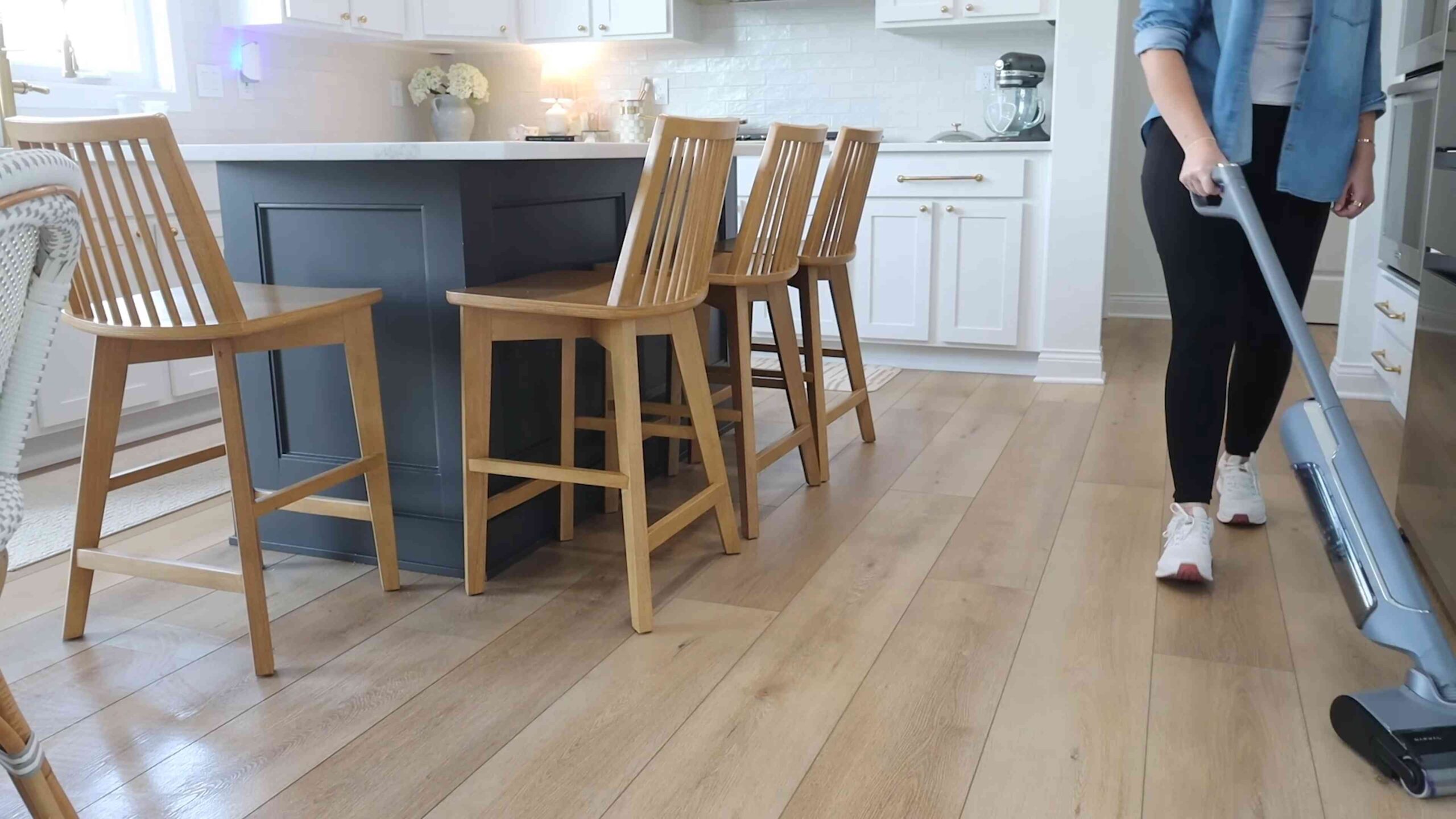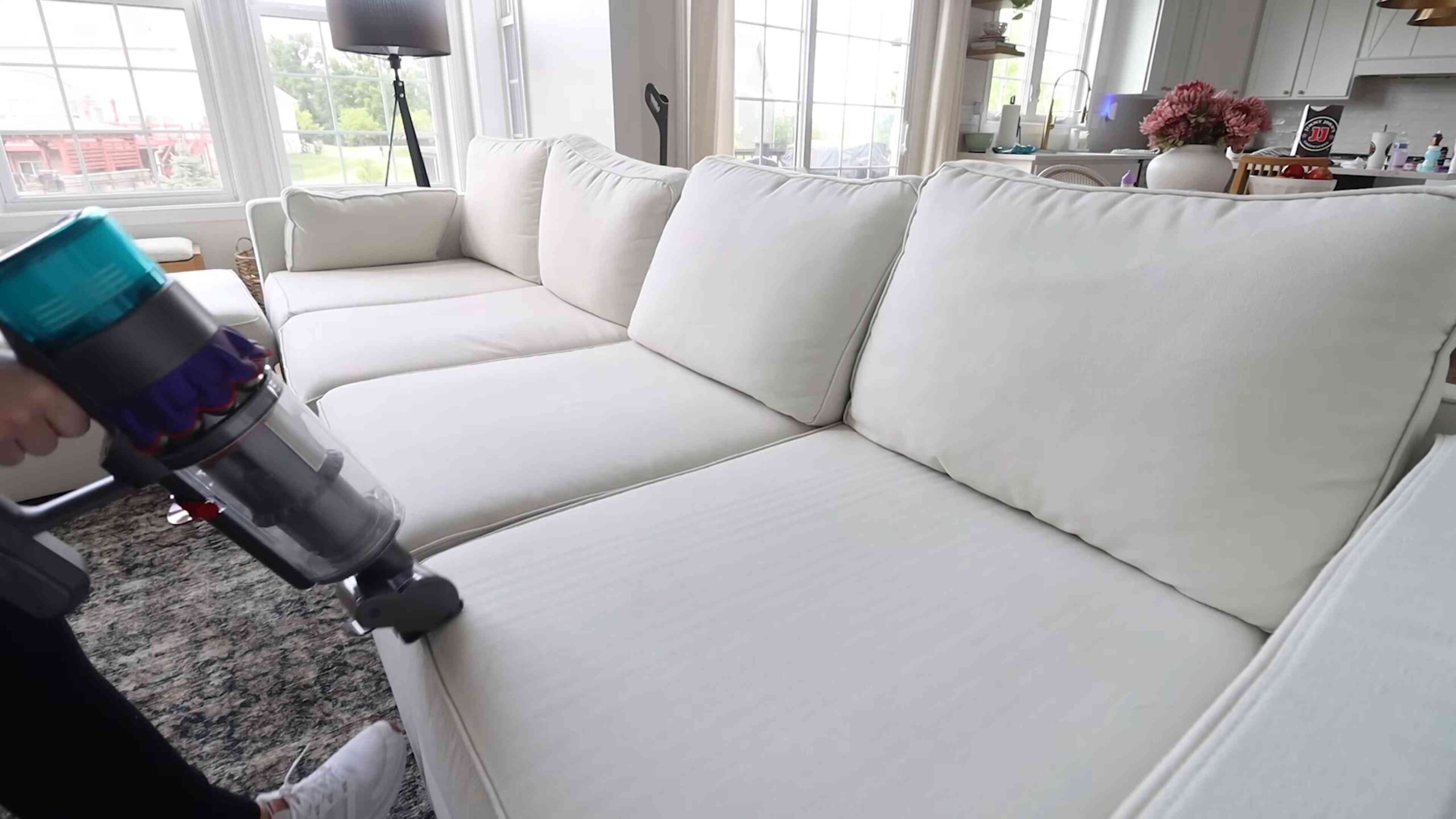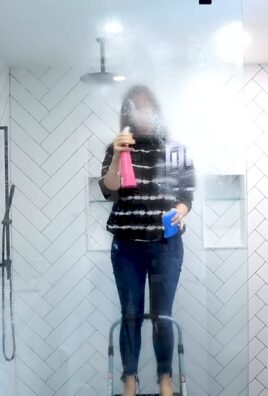Cleaning routine tip: Let’s face it, nobody *loves* cleaning, but a sparkling home is something we all crave! Ever feel like you’re constantly battling dust bunnies and grime, only to have it all return in a matter of days? I know I have! That’s why I’m so excited to share some game-changing DIY cleaning hacks that will transform your cleaning routine from a chore into a breeze.
Throughout history, maintaining a clean home has been more than just aesthetics; it’s been linked to health, well-being, and even social standing. Think about the ancient Roman bathhouses or the meticulous cleaning rituals in many cultures – cleanliness has always been valued. But in today’s busy world, who has time for elaborate cleaning rituals? That’s where these DIY tricks come in!
These aren’t your grandma’s cleaning tips (though, no offense to grandma!). We’re talking about clever, cost-effective solutions using everyday items you probably already have in your pantry. From tackling stubborn stains to creating your own eco-friendly cleaning solutions, this article is packed with secrets to streamline your cleaning routine tip and reclaim your precious time. Get ready to say goodbye to endless scrubbing and hello to a cleaner, happier home!

DIY Natural All-Purpose Cleaner: Ditch the Chemicals!
Hey everyone! I’m so excited to share my go-to recipe for a natural all-purpose cleaner. I’ve been using this for years, and it’s seriously replaced almost every commercial cleaner in my house. Not only is it super effective, but it’s also incredibly cheap and eco-friendly. Plus, you know exactly what’s going into it – no more mystery ingredients!
Why Go Natural?
Before we dive in, let’s quickly talk about why I made the switch to natural cleaners. Commercial cleaners are often packed with harsh chemicals that can be harmful to our health and the environment. Things like volatile organic compounds (VOCs) can irritate our lungs and skin, and some chemicals are even linked to more serious health problems. Plus, many of these chemicals end up polluting our waterways.
Making your own cleaner is a simple way to reduce your exposure to these harmful substances and do your part for the planet. And trust me, it’s not as intimidating as it sounds!
What You’ll Need
Here’s a list of everything you’ll need to whip up this amazing all-purpose cleaner:
* White Vinegar: This is the star of the show! Vinegar is a natural disinfectant and deodorizer.
* Water: Distilled water is best, but tap water works too.
* Essential Oils (Optional): These add a lovely scent and can also boost the cleaning power. I personally love lemon, tea tree, lavender, and eucalyptus.
* Spray Bottle: A clean, empty spray bottle is essential for dispensing your cleaner.
* Measuring Cup: For accurate measurements.
* Funnel (Optional): Makes pouring the ingredients into the spray bottle easier.
The Basic Recipe
This is the foundation of our all-purpose cleaner. We’ll tweak it later with essential oils, but this is the base you’ll always come back to.
Ingredients:
* 1 part White Vinegar
* 1 part Water
Instructions:
1. Prepare Your Spray Bottle: Make sure your spray bottle is clean and dry. I usually give mine a quick rinse with hot water before using it.
2. Combine Vinegar and Water: Using your measuring cup, pour equal parts white vinegar and water into the spray bottle. For example, if you’re using a 16-ounce spray bottle, you’d use 8 ounces of vinegar and 8 ounces of water.
3. Shake Well: Secure the spray nozzle and shake the bottle vigorously to combine the ingredients.
And that’s it! You’ve made a basic all-purpose cleaner. It’s ready to use on most surfaces, but I’ll give you some tips on where *not* to use it later.
Adding Essential Oils for Scent and Extra Cleaning Power
Okay, now for the fun part! Adding essential oils not only makes your cleaner smell amazing, but it can also boost its cleaning power. Some essential oils have antibacterial, antiviral, and antifungal properties.
Instructions:
1. Choose Your Essential Oils: This is where you can get creative! Here are some of my favorite essential oils for cleaning:
* Lemon: A classic choice for its fresh, clean scent and degreasing properties.
* Tea Tree: A powerful antibacterial and antifungal oil.
* Lavender: Known for its calming scent, but also has antiseptic properties.
* Eucalyptus: Great for disinfecting and has a refreshing scent.
* Orange: Another citrus option with degreasing properties and a cheerful scent.
* Peppermint: Adds a refreshing scent and can help repel insects.
2. Add Essential Oils to the Mixture: Add 10-20 drops of your chosen essential oil(s) to the vinegar and water mixture in the spray bottle. I usually start with 10 drops and add more if I want a stronger scent. You can use a single oil or create a blend. For example, I love combining lemon and tea tree for a powerful and fresh-smelling cleaner.
3. Shake Well Again: Secure the spray nozzle and shake the bottle well to distribute the essential oils.
Important Note: Essential oils can sometimes degrade plastic over time, so it’s best to use a glass spray bottle if you plan on using essential oils regularly.
Tips for Using Your Natural All-Purpose Cleaner
Now that you’ve made your cleaner, let’s talk about how to use it effectively.
* Test on a Small Area First: Before using the cleaner on a large surface, always test it on a small, inconspicuous area to make sure it doesn’t damage or discolor the material. This is especially important for delicate surfaces like wood or painted walls.
* Spray and Wipe: Simply spray the cleaner onto the surface you want to clean and wipe it down with a clean cloth or sponge.
* Let it Sit for Tough Stains: For stubborn stains or grime, let the cleaner sit on the surface for a few minutes before wiping it away.
* Use on a Variety of Surfaces: This cleaner is great for countertops, sinks, toilets, showers, floors (except hardwood – see below!), and appliances.
* Don’t Use on These Surfaces: Avoid using this cleaner on:
* Hardwood Floors: Vinegar can damage the finish on hardwood floors.
* Granite and Marble: Vinegar can etch these natural stones.
* Electronics: Never spray cleaner directly onto electronics. Instead, spray it onto a cloth and then wipe the device.
* Waxed Furniture: Vinegar can strip the wax from furniture.
* Storage: Store your cleaner in a cool, dark place. It should last for several months.
Troubleshooting
Sometimes, things don’t go exactly as planned. Here are some common issues and how to fix them:
* Vinegar Smell is Too Strong: If you find the vinegar smell overpowering, try adding more essential oils or diluting the cleaner with more water. The vinegar smell will dissipate as it dries.
* Cleaner Leaves Streaks: This can happen if you’re using too much cleaner or if your cloth is dirty. Try using less cleaner and wiping with a clean, dry cloth.
* Cleaner Doesn’t Seem to Be Working: Make sure you’re using enough cleaner and letting it sit on the surface for a few minutes before wiping. You can also try adding a few drops of dish soap to the mixture for extra cleaning power.
Boosting the Cleaning Power: Advanced Tips
Want to take your natural cleaning game to the next level? Here are a few advanced tips:
* Add Baking Soda for Extra Scrubbing Power: For tough stains or baked-on grime, sprinkle baking soda onto the surface before spraying with the cleaner. The baking soda will act as a gentle abrasive.
* Infuse Vinegar with Citrus Peels: For an even more potent citrus-scented cleaner, infuse your vinegar with citrus peels. Simply place citrus peels (lemon, orange, grapefruit, etc.) in a jar and cover them with white vinegar. Let it sit for a few weeks, then strain the vinegar and use it in your cleaner.
* Use Castile Soap for Extra Cleaning Power: Add a tablespoon of liquid Castile soap (like Dr. Bronner’s) to your cleaner for extra cleaning power. Castile soap is a natural, plant-based soap that’s gentle yet effective.
My Favorite Essential Oil Blends
Here are a few of my go-to essential oil blends for cleaning:
* The “Fresh & Clean” Blend: 10 drops Lemon + 5 drops Tea Tree + 5 drops Eucalyptus
* The “Calming & Clean” Blend: 10 drops Lavender + 5 drops Lemon + 5 drops Orange
* The “Invigorating & Clean” Blend: 10 drops Peppermint + 5 drops Lemon + 5 drops Rosemary
Feel free to experiment and create your own blends!
Cost Comparison
Let’s talk about the cost savings. A bottle of commercial all-purpose cleaner can easily cost $3-$5. A gallon of white vinegar costs around $3, and a bottle of essential oil costs around $10-$15 (but will last you a long time!). So, for a fraction of the cost, you can make a much healthier and more effective cleaner.
Final Thoughts
I hope you’re as excited about this natural all-purpose cleaner as I am! It’s a simple, affordable, and effective way to keep your home clean and healthy. Give it a try and let me know what you think! Happy cleaning!

Conclusion
So, there you have it! This simple yet incredibly effective DIY cleaning routine tip is more than just a quick fix; it’s a game-changer for maintaining a sparkling clean home without breaking the bank or relying on harsh chemicals. We’ve shown you how to harness the power of readily available ingredients to create a cleaning solution that’s both powerful and gentle on your surfaces.
Why is this a must-try? Because it’s economical, eco-friendly, and exceptionally effective. Think about it: no more trips to the store for expensive, specialized cleaners. No more worrying about the fumes and residue left behind by commercial products. Instead, you have a safe, natural solution that tackles grime, grease, and everyday messes with ease. Plus, you’re reducing your environmental footprint by minimizing plastic waste and avoiding harmful chemicals.
But the benefits don’t stop there. This DIY cleaning routine tip is also incredibly versatile. Feel free to experiment with different essential oils to customize the scent and add extra cleaning power. A few drops of tea tree oil can boost its antibacterial properties, while lemon oil adds a refreshing citrus aroma and helps cut through grease. You can also adjust the ratio of ingredients to suit your specific cleaning needs. For tougher stains, try increasing the concentration of vinegar or baking soda.
Consider these variations to tailor the recipe to your specific needs:
* **For a streak-free glass cleaner:** Reduce the amount of soap and increase the vinegar.
* **For a gentle all-purpose cleaner:** Dilute the solution with more water.
* **For a disinfectant spray:** Add a few drops of tea tree or eucalyptus essential oil.
* **For a kitchen degreaser:** Use a slightly higher concentration of dish soap.
We’re confident that once you try this DIY cleaning routine tip, you’ll wonder how you ever lived without it. It’s a simple, sustainable, and satisfying way to keep your home clean and healthy.
Now, it’s your turn! We encourage you to give this DIY cleaning routine tip a try and see the amazing results for yourself. Don’t be afraid to experiment with different variations and find what works best for your home and your cleaning style.
And most importantly, we want to hear about your experience! Share your tips, tricks, and success stories in the comments below. Let us know what variations you tried, what surfaces you cleaned, and how this DIY solution has transformed your cleaning routine. Together, we can create a community of eco-conscious cleaners who are passionate about keeping their homes sparkling clean in a sustainable and affordable way. So, grab your ingredients, get mixing, and get ready to experience the magic of this simple yet powerful DIY cleaning solution!
Frequently Asked Questions
What exactly are the ingredients needed for this DIY cleaning routine tip?
The basic recipe typically involves white vinegar, water, and a small amount of dish soap. Some variations may include baking soda or essential oils for added cleaning power or fragrance. The specific ratios will depend on the intended use of the cleaner. For example, a glass cleaner will have a higher vinegar to water ratio than an all-purpose cleaner. Always use a gentle dish soap to avoid leaving a residue.
Is this DIY cleaning solution safe to use on all surfaces?
While this DIY cleaning routine tip is generally safe for most surfaces, it’s always a good idea to test it in an inconspicuous area first, especially on delicate materials like marble, granite, or wood. Vinegar, in particular, can be acidic and may damage certain surfaces. Avoid using it on natural stone countertops or unsealed wood. For these surfaces, a milder solution of soap and water is recommended. Always check the manufacturer’s instructions for cleaning specific surfaces.
How long does this DIY cleaning solution last?
This DIY cleaning solution typically lasts for several weeks when stored in a cool, dark place. However, it’s best to use it within a month to ensure its effectiveness. Over time, the ingredients may separate or lose their potency. Be sure to label the bottle with the date you made the solution so you can keep track of its freshness. If you notice any changes in color, odor, or consistency, it’s best to discard the solution and make a fresh batch.
Can I use different types of vinegar for this DIY cleaning routine tip?
While white vinegar is the most commonly used type of vinegar for cleaning, you can experiment with other types, such as apple cider vinegar. However, be aware that apple cider vinegar has a stronger odor and may leave a slight residue. White vinegar is preferred because it’s clear, odorless, and readily available. Avoid using balsamic vinegar or other flavored vinegars, as they may stain surfaces.
What essential oils are best to use in this DIY cleaning solution?
The best essential oils to use in this DIY cleaning routine tip depend on your personal preferences and the desired cleaning properties. Some popular choices include lemon, tea tree, lavender, eucalyptus, and peppermint. Lemon oil is great for cutting through grease and adding a fresh scent. Tea tree oil has antibacterial and antifungal properties. Lavender oil has a calming scent and can help to disinfect surfaces. Eucalyptus oil is effective at removing mildew and mold. Peppermint oil has a refreshing scent and can help to repel insects. Always use pure, high-quality essential oils for the best results.
How do I store this DIY cleaning solution?
Store your DIY cleaning solution in a clean, airtight spray bottle or container. Label the bottle clearly with the contents and the date it was made. Keep the solution in a cool, dark place away from direct sunlight and heat. This will help to preserve its effectiveness and prevent the ingredients from separating. Avoid storing the solution in metal containers, as the vinegar may react with the metal.
Is this DIY cleaning solution safe for pets and children?
While this DIY cleaning routine tip is generally safer than commercial cleaners, it’s still important to take precautions when using it around pets and children. Keep the solution out of reach of children and pets. Avoid spraying it directly on surfaces that pets or children may lick. If your pet or child accidentally ingests the solution, contact a veterinarian or poison control center immediately. When using essential oils, be aware that some oils can be toxic to pets. Always research the safety of essential oils before using them around animals.
Can I use this DIY cleaning solution to clean my toilet?
Yes, this DIY cleaning routine tip can be used to clean your toilet. Simply spray the solution inside the bowl and around the rim. Let it sit for a few minutes, then scrub with a toilet brush and flush. For tougher stains, you can add baking soda to the bowl before spraying the solution. The vinegar will help to disinfect the toilet, while the baking soda will act as a mild abrasive to remove stains.
How often should I use this DIY cleaning solution?
The frequency of use will depend on your cleaning habits and the level of dirt and grime in your home. For general cleaning, you can use this solution daily or weekly. For tougher stains or messes, you may need to use it more frequently. Pay attention to the areas that tend to get dirty quickly, such as kitchen counters, bathroom sinks, and floors. Regular cleaning with this DIY solution will help to keep your home clean and fresh.





Leave a Comment